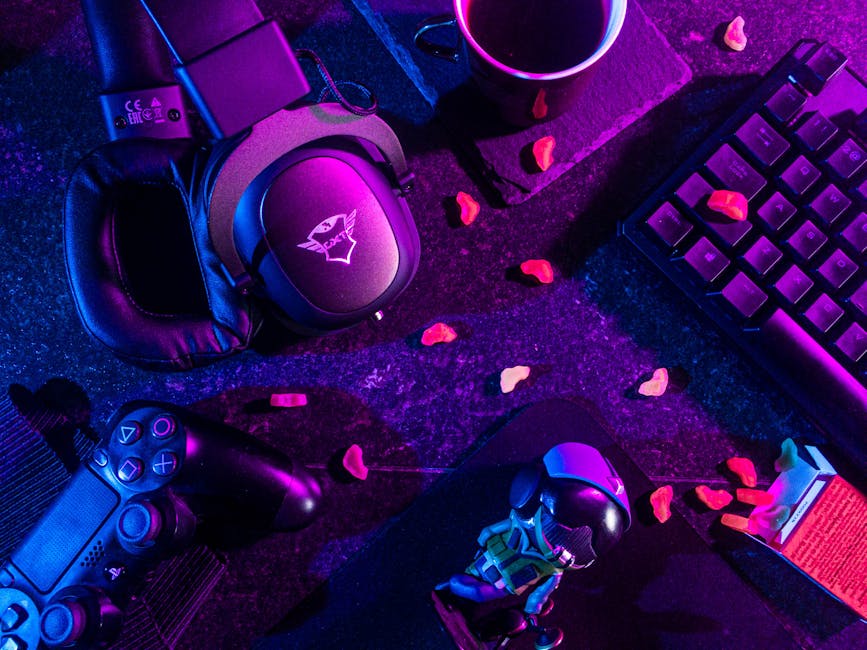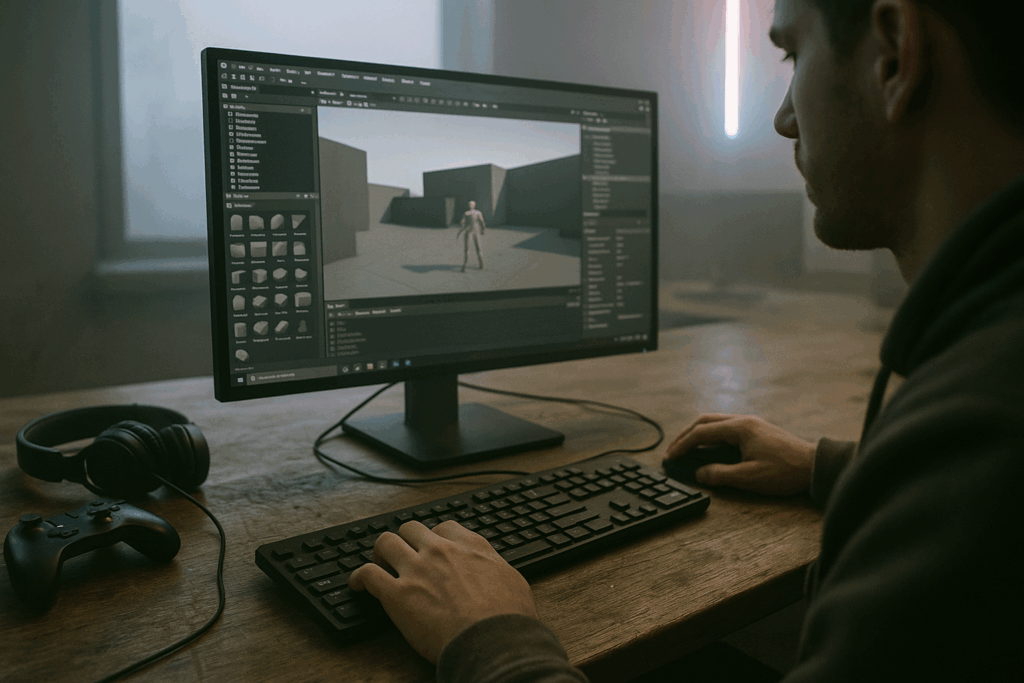Intro: Why Gaming Is Worth Jumping Into
Gaming isn’t just about kill streaks, high scores, or who can build the tallest pixelated castle. It’s a full-on experience—a place to hang out, wind down, or even build something new. In 2024, games aren’t just games. They’re stories, playgrounds, virtual meetups, and creative sandboxes all rolled into one.
For a lot of people, gaming is where they first connect with close friends or total strangers halfway across the world. It’s a shared space where skill meets expression. You laugh, learn, fail, win—and sometimes log off just to figure it all out again tomorrow.
But gaming isn’t only for the hardcore. Some just want to relax with a puzzle game while waiting for dinner. Others jump in and realize they’d rather make games than just play them. One day you’re tinkering in Minecraft or customizing your island in Animal Crossing—next thing you know, you’re learning to code and building your first level in Unity.
This guide starts right there—at the beginning. Whether you’re all in or just curious, it’s your starting point. Grab a controller, a keyboard, or just your phone. Here’s where it begins.
Pick Your Platform
Before anything else, you need to decide how you want to play. There’s no single right answer—it all hinges on your budget, preferences, and what kind of experience you’re chasing.
Consoles (PlayStation, Xbox, Nintendo): These are the plug-and-play systems. You plug in the box, grab a controller, and you’re off. Consoles are great if you want simplicity and exclusive titles like Zelda (Nintendo), Spider-Man (PlayStation), or Halo (Xbox). They’re also social-friendly—split-screen still lives here. Downsides? Upgrades are rare, and once the hardware’s dated, you’re stuck until the next release. Expect to shell out $299 to $499 depending on the model and edition.
PC Gaming: This route gives you ultimate control. You can customize, upgrade, and fine-tune everything—from graphics performance to keybinds. It’s ideal for players who want top-tier visuals, moddable games, or even to dip into streaming or game dev later on. Costs are flexible: a decent budget build might hit $600–$800, while high-end rigs leap beyond $1,500. But PCs can scale with you—you don’t have to start at the top.
Mobile Gaming: This is the most accessible space. You already have the device in your hand. Whether it’s pick-up-and-play puzzle games or competitive shooters with touchscreen controls, mobile gaming has closed the gap. It’s low-cost, low-commitment, and very on-the-go. Just don’t expect the same depth or performance as a console or PC—though cloud gaming is beginning to challenge that.
What to Pick:
- On a tight budget or just testing the waters? Mobile or older-generation consoles (like a refurbished PS4 or Xbox One) are safe starters.
- Want a controlled-but-rich experience without the tech fuss? Consoles deliver that.
- Eyeing deeper immersion, competitive edge, or future upgrading? PC is your playground.
Start where your interest and budget meet. You can always branch out later.
Gear Up with the Right Hardware
Let’s keep it simple. You need a machine to play on, something to see it with, and something to control the game. That’s your base setup. Console or PC—pick your weapon. Console setups are plug-and-play: a PlayStation, Xbox, or Switch, plus a TV or monitor and a standard controller. Done. PC gaming? It’s more flexible and upgrade-friendly, but demands a bit more research. You’ll want a decent monitor and a mouse/keyboard combo or controller, depending on the games you lean toward.
Now the useful extras. A headset goes a long way—not just for hearing footsteps, but for talking to teammates without shouting across the room. Storage matters too. Games these days are massive, and running out of space is a pain, so grab an external drive if you can swing it. Thinking about streaming or making content? A basic capture card or streaming-ready console will set you up without digging too deep into your wallet.
You don’t need thousands to get started. Entry-level gear has come a long way. You can find reliable setups at budget prices if you skip the flash and focus on function. Start with the basics—and upgrade as you go.
Choose the Right Types of Games
The world of gaming is wide. Before you drop cash—or hours—on a title, it helps to know what kind of experience you’re after. Start with the basics:
- Action games are fast, twitchy, and adrenaline-heavy. Think hacking enemies, shooting foes, or dodging traps. Titles like ‘God of War’ or ‘Call of Duty’ sit here.
- RPGs (Role-Playing Games) dive deep into story and character building. You can spend 20 hours (or 200) exploring rich worlds—‘The Witcher 3’ and ‘Final Fantasy’ are classics.
- Simulations aim to replicate real-life or theoretical scenarios—anything from flying a plane to running a farm.
- FPS (First-Person Shooters) deliver high-paced, gritty gameplay from your character’s eyes. Expect skill-based combat and reflex testing.
- Puzzle games keep it quiet and cerebral. ‘Tetris’, ‘The Witness’, even cozy indies where the challenge is mental, not physical.
Not sure what clicks with you? That’s normal. Try demos, watch gameplay on YouTube or Twitch, or borrow titles from friends. There’s no wrong answer—only what keeps you coming back.
When you’re ready to buy, you’ve got options. Digital storefronts like Steam, PlayStation Store, and Xbox Marketplace are the norm. Subscription services (Game Pass, PlayStation Plus, Apple Arcade) offer big libraries for a monthly fee. For PC gamers, Epic Games Store and itch.io give indie games a lot of shine.
Stick to what interests you, not what’s trending. The right genre can turn a game from a time-killer into something you actually care about.
Learn the Language of Gaming
Before you dive deep into your first game, you’ll want to understand the basic vocabulary. Gaming communities move fast, and knowing the lingo helps you follow tutorials, join conversations, and avoid embarrassment in multiplayer lobbies.
Must-Know Gaming Terms
Here are a few common terms that you’ll start hearing almost immediately:
- FPS: Can mean either First-Person Shooter (a game genre like Call of Duty), or Frames Per Second (a performance measurement—higher means smoother visuals).
- Lag: Delays between your input and what happens on-screen, usually due to internet connection issues.
- DLC (Downloadable Content): Extra content developers release after a game’s launch—can be free or paid.
- Grind: Repetitive tasks players complete to level up or get better gear—it can be tedious or satisfying, depending on the game and the player.
Learning these basics will help you understand game descriptions, settings menus, and more.
Online Gaming Etiquette
Playing online with others adds a social layer to your experience—but it also comes with its own unspoken rules. Whether you’re playing with strangers or friends, here are a few things to keep in mind:
- Don’t rage: Everyone starts somewhere. Stay calm if you or your team loses.
- Use your mic wisely: Trash talk is common, but mutual respect goes a long way. Use voice chat to collaborate—not harass.
- No cheating or trolling: These behaviors ruin everyone’s fun—and can get you banned.
- Help, don’t hate: Be the player who’s patient with beginners. It’s noticed and appreciated.
Gaming culture thrives on competition, but being a good teammate or opponent makes everyone’s time more enjoyable.
Understanding Game Ratings
Games vary in tone and content. Understanding rating systems helps you choose experiences appropriate for your age and comfort level:
- ESRB (Entertainment Software Rating Board – North America)
- E (Everyone): Suitable for all ages
- T (Teen): May include violence, suggestive themes, or mild language
- M (Mature): Contains intense violence, strong language, or adult content
- PEGI (Pan European Game Information – Europe)
- Age labels: 3, 7, 12, 16, and 18
- Also includes symbols for violence, fear, gambling, and more
Always check the rating before buying or downloading a new game—especially if you’re gaming as a family or sharing devices.
Bottom Line
Mastering gaming language takes time, but you’ll pick it up naturally the more you play. Don’t be afraid to ask questions or look up terms. A little knowledge goes a long way to making your early gaming experience smoother and more fun.
Join a Community
Playing solo has its moments—it’s peaceful, no pressure, and you can go at your own pace. But if you stick with gaming long enough, you’ll hit a point where you want more than just beating levels. That’s where community shows up big.
Online spaces like Discord servers, Reddit forums, or Twitch chat aren’t just places to talk—they’re where players swap tips, laugh over fails, organize game nights, and help each other through tough missions. It’s where a game turns into a shared experience. You’re no longer just a player; you’re part of something bigger.
Not all communities are worth your time, though. Some are toxic, gatekeepy, or just full of noise. The good ones? They teach you, push you, and make the grind more fun. Look for spaces where questions get answered, mistakes aren’t mocked, and you leave feeling better, not worse.
Joining a solid community keeps you learning, motivated, and connected—even when you’re stuck or burned out. Gaming is more fun when someone’s got your back.
(Optional) Want to Make Games Someday?
Not every gamer wants to build a game—but if you’ve ever caught yourself thinking, “What if this level had a hidden route?” or “Why can’t I swap these mechanics?”—you’re already halfway into a developer’s mindset.
Start simple. Unity is great for 2D and 3D indie-style projects. Unreal Engine brings heavy graphics muscle (think cinematic), while Godot is lightweight, open-source, and increasingly powerful. You don’t need to master them all—just pick one, mess around, and follow some beginner tutorials. Headspaces like Itch.io feature tons of small projects made in these tools. Study them, poke at the code if it’s open, and experiment.
Most importantly: play games like a developer. Ask “Why did this level feel good?” or “What made that boss fight work?”—then try to recreate it. Flip from consumer to creator. You won’t see games the same way again.
To dig deeper into the tools and how to pick one, check out the Essential Software for Aspiring Game Developers.
Final Tips to Get Started
Diving into the world of gaming can be exciting—but it’s also easy to feel overwhelmed or discouraged early on. Here’s how to set yourself up for success and long-term enjoyment, no matter your experience level.
Set Realistic Expectations
Not every gamer becomes a pro overnight—and that’s okay. Every player starts somewhere, and progression comes with time, practice, and patience.
- It’s normal to struggle with difficult games or new genres
- Don’t compare your start to someone else’s highlight reel
- Focus on enjoying the process, not just ranking up
Stay Curious and Open-Minded
Your gaming preferences will evolve the more you explore. A game you overlook today might become a favorite down the road.
- Try different genres and gameplay styles
- Embrace indie titles and lesser-known gems
- Be open to solo and multiplayer experiences alike
Keep Learning Beyond the Game
Gaming isn’t just about what happens when you hold the controller. Watching others play, reading strategy guides, and joining conversations can make a big difference in how you grow as a gamer.
- Follow streamers or YouTubers who showcase gameplay and tutorials
- Read guides, forums, and patch notes to understand mechanics
- Learn from others’ experiences to sharpen your own skills
Remember: everyone starts somewhere. Whether you’re aiming to unwind, master mechanics, or eventually create games yourself, what matters is staying engaged and growing at your own pace.
Wrap Up: Just Start
Here’s the truth: there is no perfect setup. Waiting until you can afford the best graphics card, the highest refresh rate monitor, or the most ergonomic chair is just delay dressed up as planning. The only thing you need to start gaming—is to start.
Pick a game that interests you. It doesn’t need to be trending. It doesn’t need to be competitive. It just needs to pull you in. Play it. Explore it. Be okay with not knowing everything at first. Every seasoned gamer was a beginner once, fumbling through tutorials and settings menus.
You’ll figure out what tech you actually need as you go. You’ll learn which genres you vibe with, which communities feel right, and what kind of player you are. But none of that happens if you never hit start. So boot up what you’ve got. Load the game. Play. Learn. Repeat.




